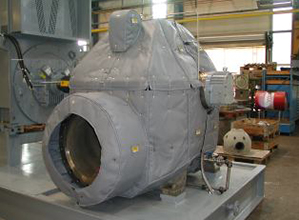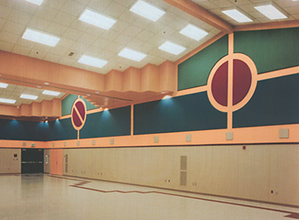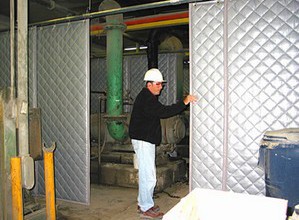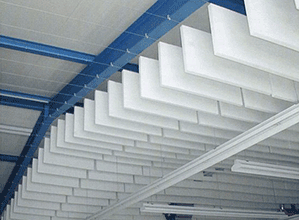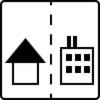Acoustical Guidelines for Cafeterias, Gyms, and Multi-Purpose Rooms
The most common problem plaguing cafeterias, gymnasiums, and multi-purpose rooms is excessive reverberation time (RT), since they typically have both large physical volume and hard surface materials. In cafeterias, this long RT causes noise buildup, with students having to speak louder and louder to hear each other until there is a continuous roar. In gymnasiums, which are frequently used for pep rallies and assemblies, combining poor acoustics with a badly designed sound system produces speech that is nearly unintelligible and wreaks havoc on music.
Several options are available for improving sound absorption in these large spaces. In new construction, if the ceiling is constructed as an exposed metal deck, consider using metal deck with perforations on the bottom and glass fiber above to absorb sound. This will significantly reduce reverberation time without adding unduly to construction costs. Another option for either new construction or renovation is to hang absorptive baffles or banners from the ceiling. Baffles and banners are commercially available products made of several inches of glass fiber covered with thin plastic of cloth. They are easily installed, available in a rainbow of colors, and do not detract from the appearance of the room. Placing glass fiber or wood fiber panels on the walls will also reduce both RT and echoes.
Gymnasiums and cafeterias tend to be noisy spaces, and this noise can also disrupt nearby classrooms. Thus, separate these areas from classrooms and do not place classrooms below gymnasiums. The impact noise from bouncing basketballs and the like is a severe problem that is expensive to correct in new construction and even more expensive in renovations.
School auditoriums accommodate a variety of activities, including speech, theater, dance, and music. All these activities require good acoustics, but each has different acoustical requirements. To meet the needs of all these activities, an auditorium’s acoustics must either be compromised so it performs adequately for all functions, but favorably for none, or else a technique called “variable acoustics” must be used to adapt its acoustics to suit each function. Variable acoustics involves the use of panels, drapery, and other materials that can be easily rearranged to alter reflections, reverberation time, and other acoustical properties. To achieve satisfactory results for these complex rooms, it is best to seek the assistance of a professional acoustical consultant. That said, the following paragraphs provide a few design guidelines to follow and common pitfalls to avoid.
Combining the auditorium with the cafeteria or gymnasium is a tempting way to save both money and square footage. Unfortunately, this rarely, if ever, results in an acoustically satisfactory auditorium since the rooms have conflicting requirements. In an auditorium, the objective is to reinforce sound from a single location, while in cafeterias and gymnasiums the goal is to suppress the noise from many sources. This conflict cannot be resolved effectively, so these room combinations should be avoided. In an auditorium, the shape of the room is important to properly reflect sound into the audience. Avoid wide, fan-shaped halls with concave rear walls having a radius centered on the stage. A concave rear wall will focus disturbing echos back to the performers on stage, and if the side walls are splayed too wide, they will not provide useful early reflections into the seating. To allow reflected sound to reach those seated in the back, under balcony depth should be less than twice the distance to the floor below. A flat ceiling will send all reflections to the back of the hall, so sections of the ceiling should be angled to spread reflections throughout the audience.
Source: Acoustical Society of America – A Publication of the technical committee on architectural acoustics of the Acoustical Society of America. http://asa.aip.org/classroom/booklet.html
